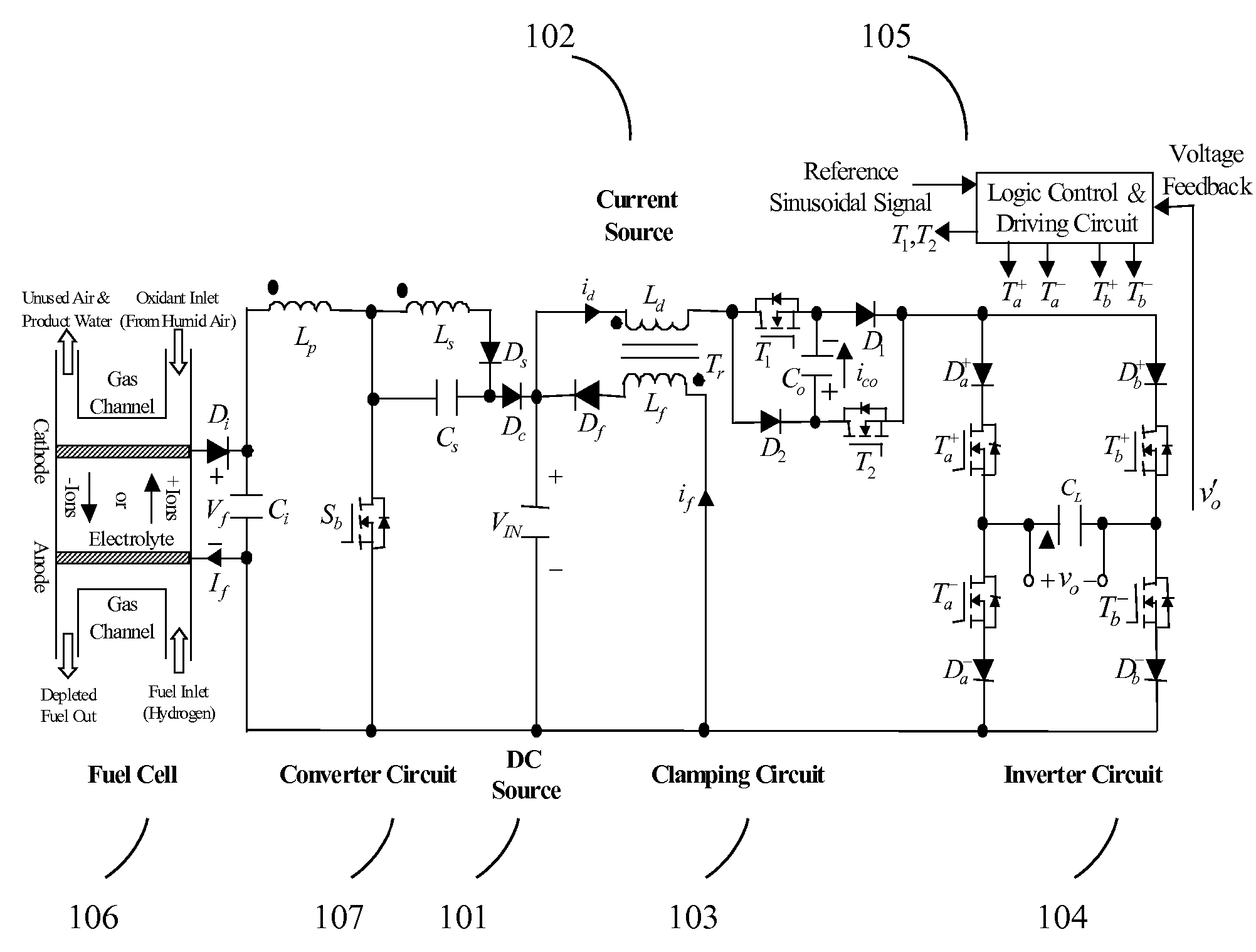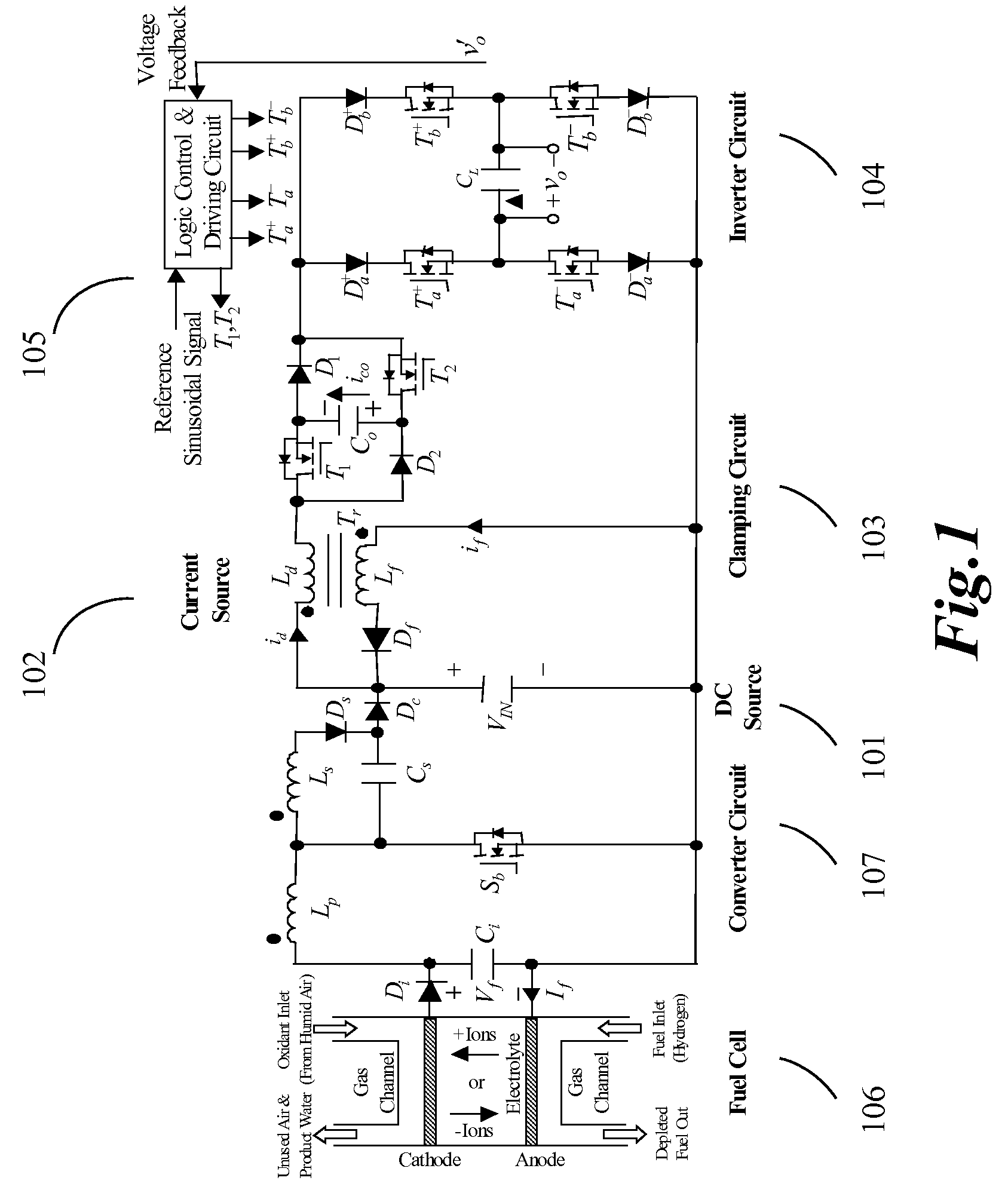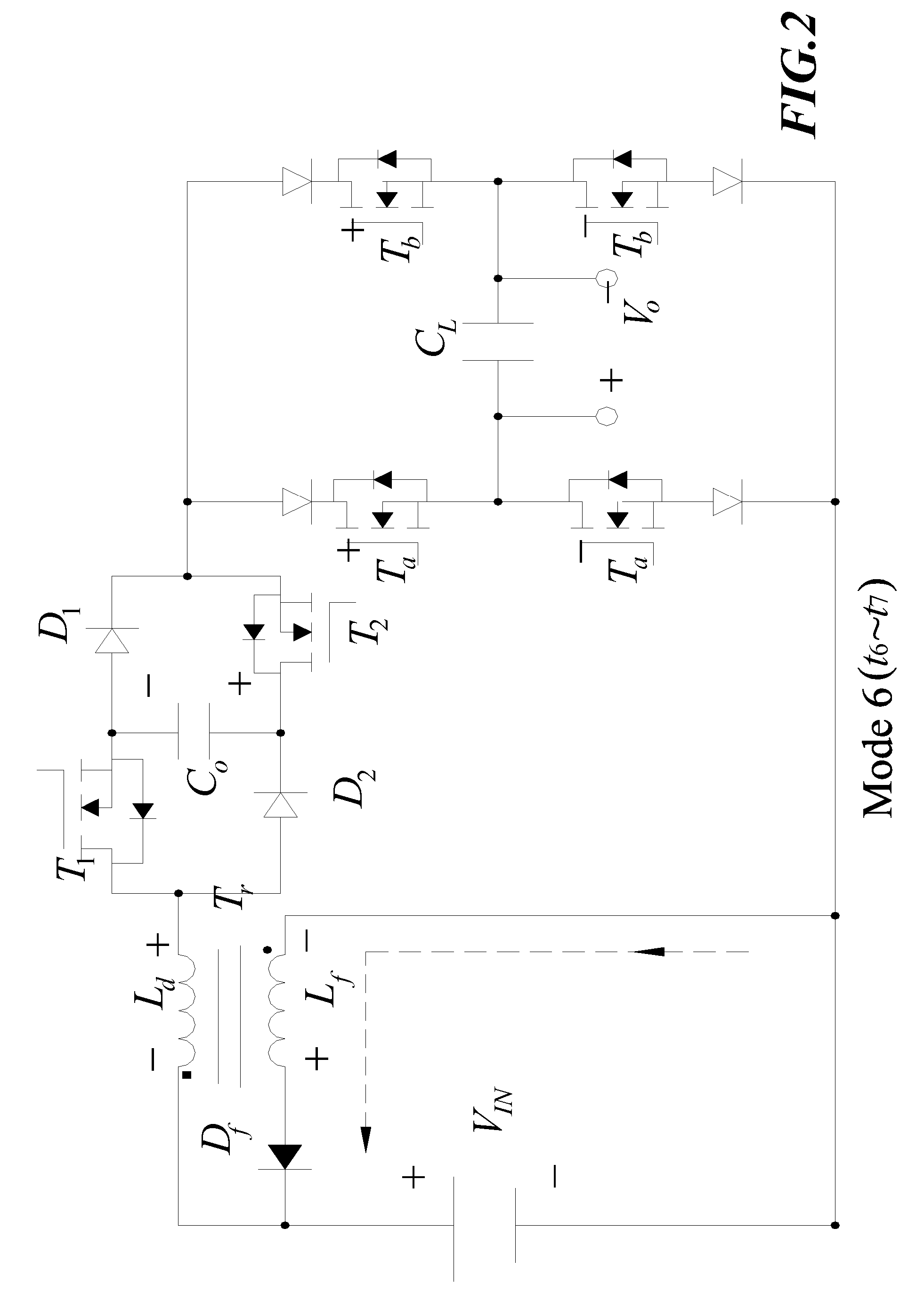Current source wave voltage inverter voltage-clamping and soft-switching techniques, and fuel cell system using the same
a technology of sine wave voltage and inverter, which is applied in the direction of dc-ac conversion without reversal, process and machine control, instruments, etc., can solve the problems of increasing the weight of the product, and not being suitable for resistive or capacitive loads
- Summary
- Abstract
- Description
- Claims
- Application Information
AI Technical Summary
Benefits of technology
Problems solved by technology
Method used
Image
Examples
Embodiment Construction
[0026]FIG. 1 illustrates a block diagram of a fuel cell system having a current-source sine wave voltage inverter using voltage-clamping and soft-switching techniques according to a preferred embodiment of the present invention. The fuel cell system includes a fuel cell 106, a DC-DC converter circuit 107, and a current-source sine wave voltage inverter which can convert a DC voltage into an AC sine wave voltage. The fuel cell 106, the DC-DC converter circuit 107, and the current-source sine wave voltage inverter are cascaded in the order. The fuel cell 106 involves converting a chemical energy directly into an electrical energy. The DC-DC converter circuit 107, and the current-source sine wave voltage inverter is utilized to delivery the electrical energy outputting from the fuel cell 106 to AC electric equipment applications.
[0027]The fuel cell 106 includes an anode, a cathode, a catalyst and an electrolyte. The main function of the electrodes (that is, the anode and the cathode) i...
PUM
 Login to View More
Login to View More Abstract
Description
Claims
Application Information
 Login to View More
Login to View More - R&D
- Intellectual Property
- Life Sciences
- Materials
- Tech Scout
- Unparalleled Data Quality
- Higher Quality Content
- 60% Fewer Hallucinations
Browse by: Latest US Patents, China's latest patents, Technical Efficacy Thesaurus, Application Domain, Technology Topic, Popular Technical Reports.
© 2025 PatSnap. All rights reserved.Legal|Privacy policy|Modern Slavery Act Transparency Statement|Sitemap|About US| Contact US: help@patsnap.com



